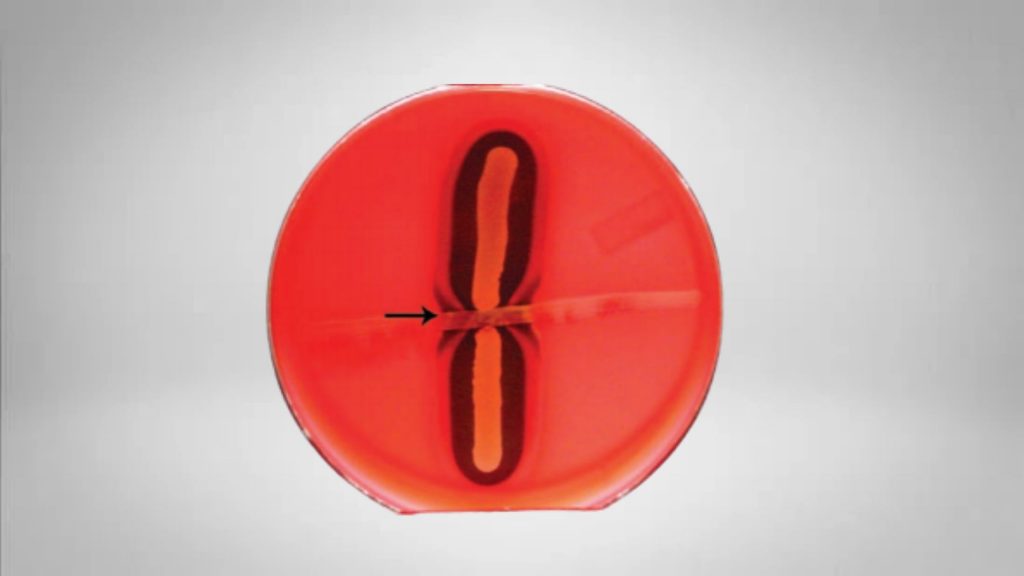Contents
Reverse CAMP test
- The full form of reverse CAMP test is reverse Christie-Atkinson-Munch-Peterson test.
- Hansen used the synergistic relationship between the two microbes such as Clostridium perfringens and Group B Streptococcus to develop a test, which known as Reverse CAMP test.
- This test is used for the differentiation of Clostridium perfringens from other Clostridium species.
- In this method, the CAMP factor produced by S. agalactiae is used to detect the Clostridium perfringens from other Clostridium species, that’s why this method is termed as a reverse CAMP test.
Objective of Reverse CAMP test
- To differentiate the Clostridium perfringens from other Clostridium species.
Reverse CAMP test Principle
In this method, the Group B Streptococcus (CAMP test positive) is streaked in the center of sheep blood agar, and Clostridium perfringens is streaked perpendicular to it. Then the plate is incubated at 37oC for 24-48 hours in anaerobic conditions, an “arrowhead” hemolysis is seen between the growth of Clostridium perfringens and Group B Streptococcus. The “arrowhead” hemolysis is seen because an alpha-toxin is produced by Clostridium perfringens which interacts with CAMP factor and produces synergistic hemolysis.
Material Required for Reverse CAMP test
- CAMP positive S. agalactiae.
- Blood agar
- Petri Plate
- Clostridium perfringens
- Incubator
Reverse CAMP test Procedure
- Streak the culture of CAMP positive S. agalactiae on the blood agar plate.
- Then Streak the Suspected clostridial culture at the right angle to the streak of S. agalactiae (avoid touching the streak of S. agalactia).
- Incubate the plate at 37°C for 24hours, anaerobically.
- After incubation observes the zone of hemolysis pointing toward S. agalactiae.
Reverse CAMP test Result
A positive reaction of Clostridium perfringens results in a “bow-tie” zone of enhanced hemolysis pointing towards Streptococcus agalactiae (group B).

Reverse CAMP test positive organisms
Corynebacterium pseudotuberculosis, Corynebacterium ulcerans, Arcanobacterium haemolyticum, Mycoplasma hyorhinis, C. perfringens.
References
- https://healthjade.net/camp-test/
- http://microbesinfo.com/2013/07/camp-test-christie-atkins-and-munch-peterson-test/
- https://microbiologynotes.com/reverse-camp-test-for-the-identification-of-clostridium-perfringens/
- https://www.basu.org.in/wp-content/uploads/2021/01/CAMP_Tests__Standard_and_Rapid__and_Reverse_CAMP_test.pdf










